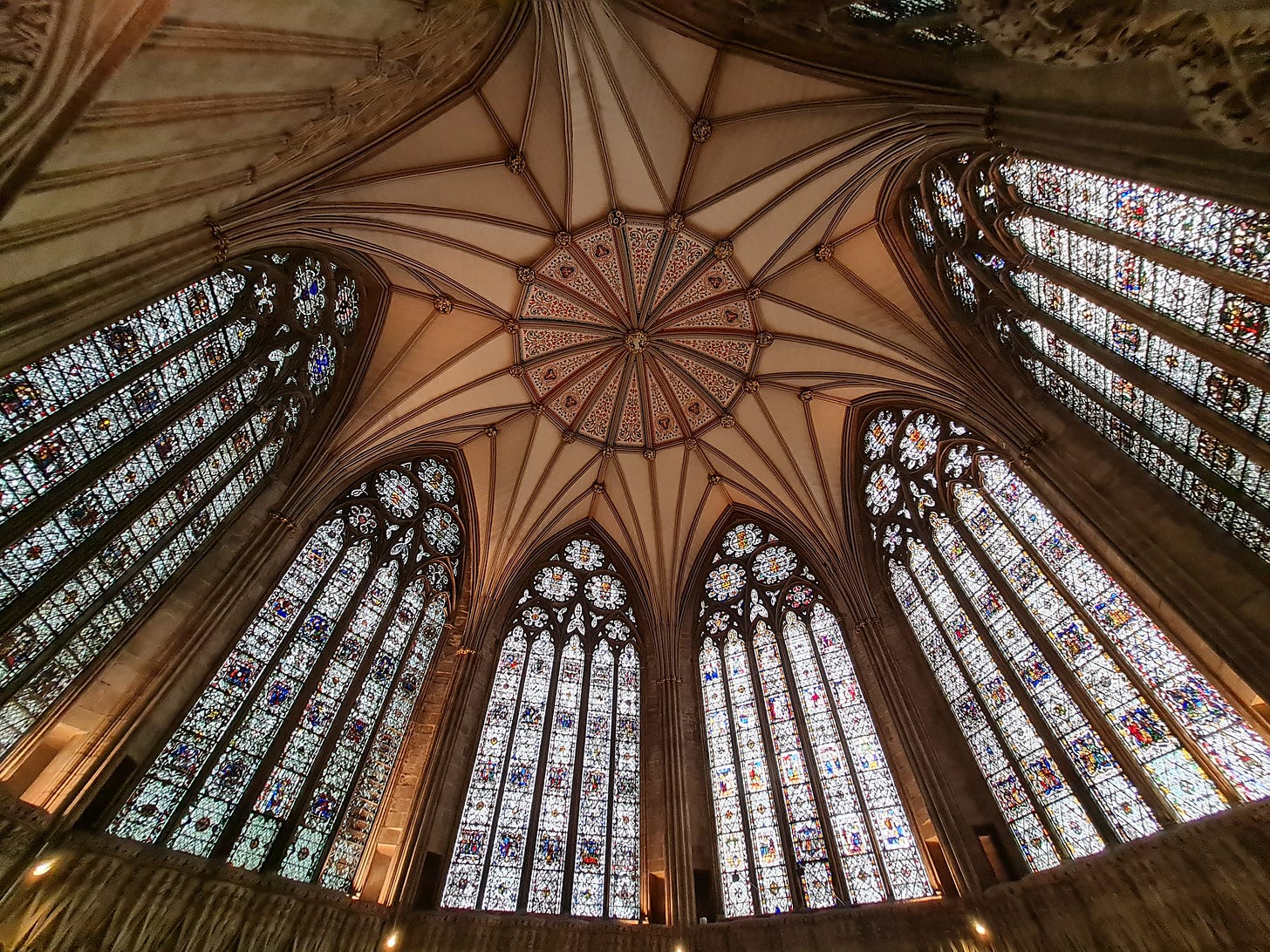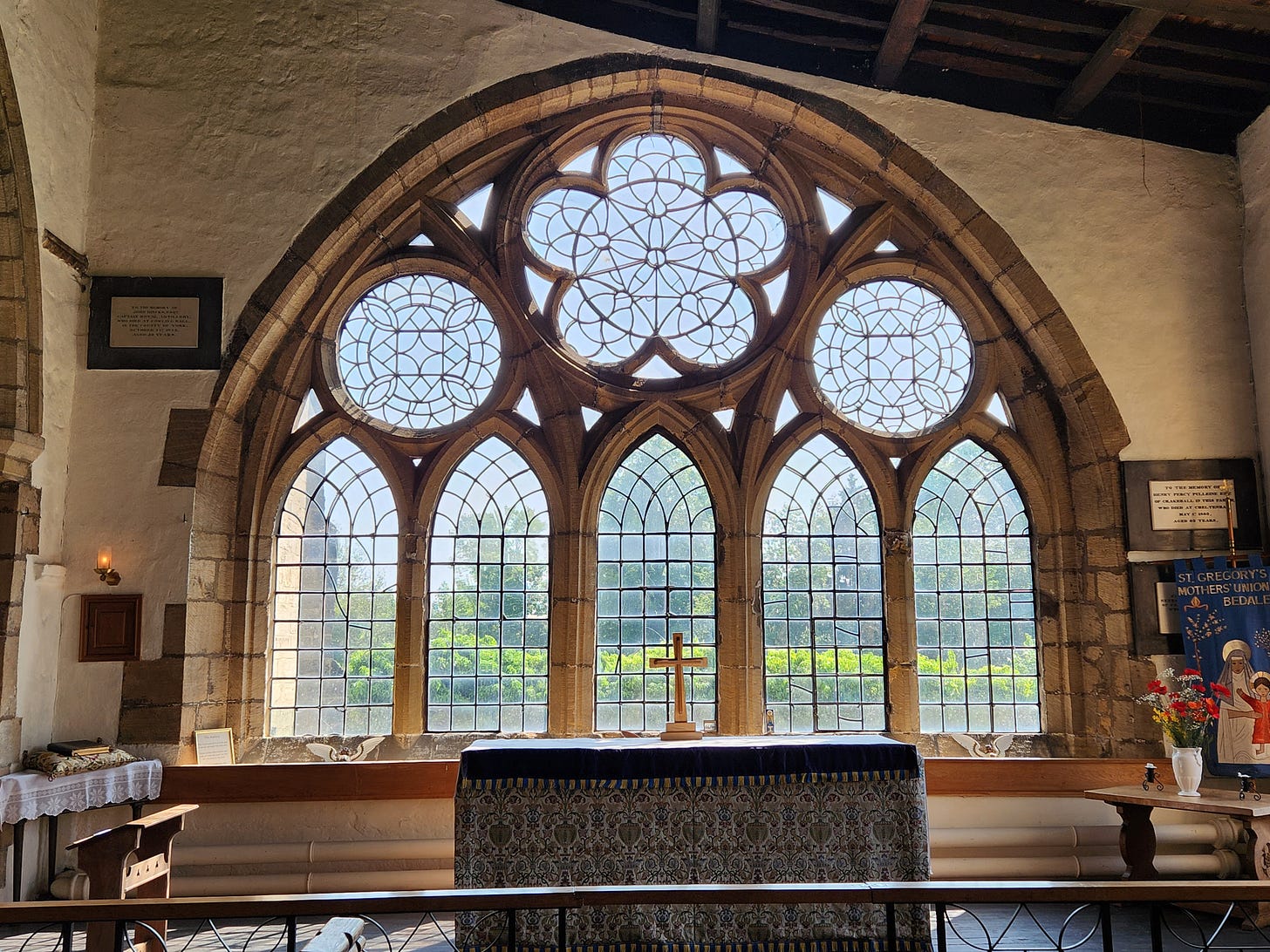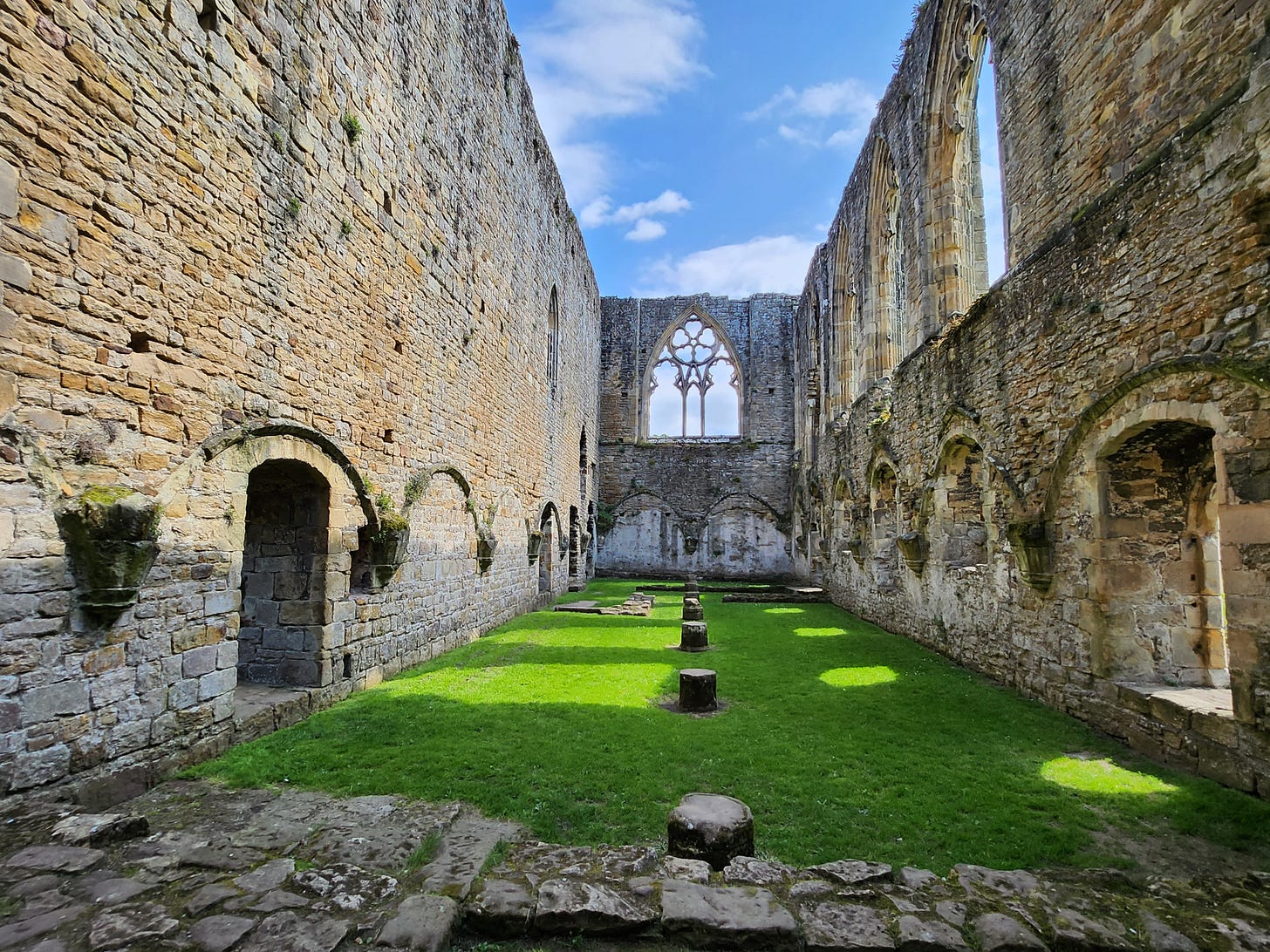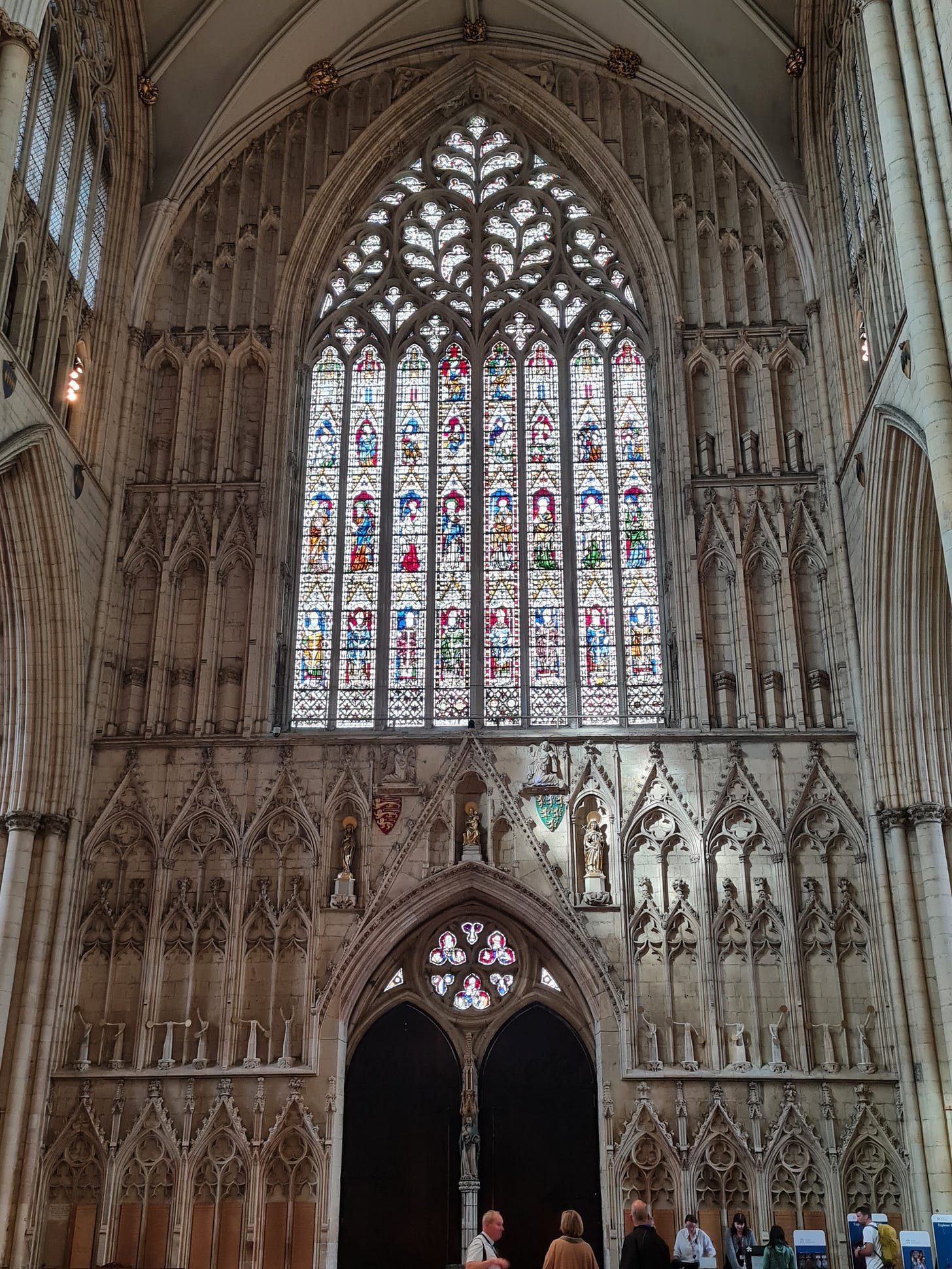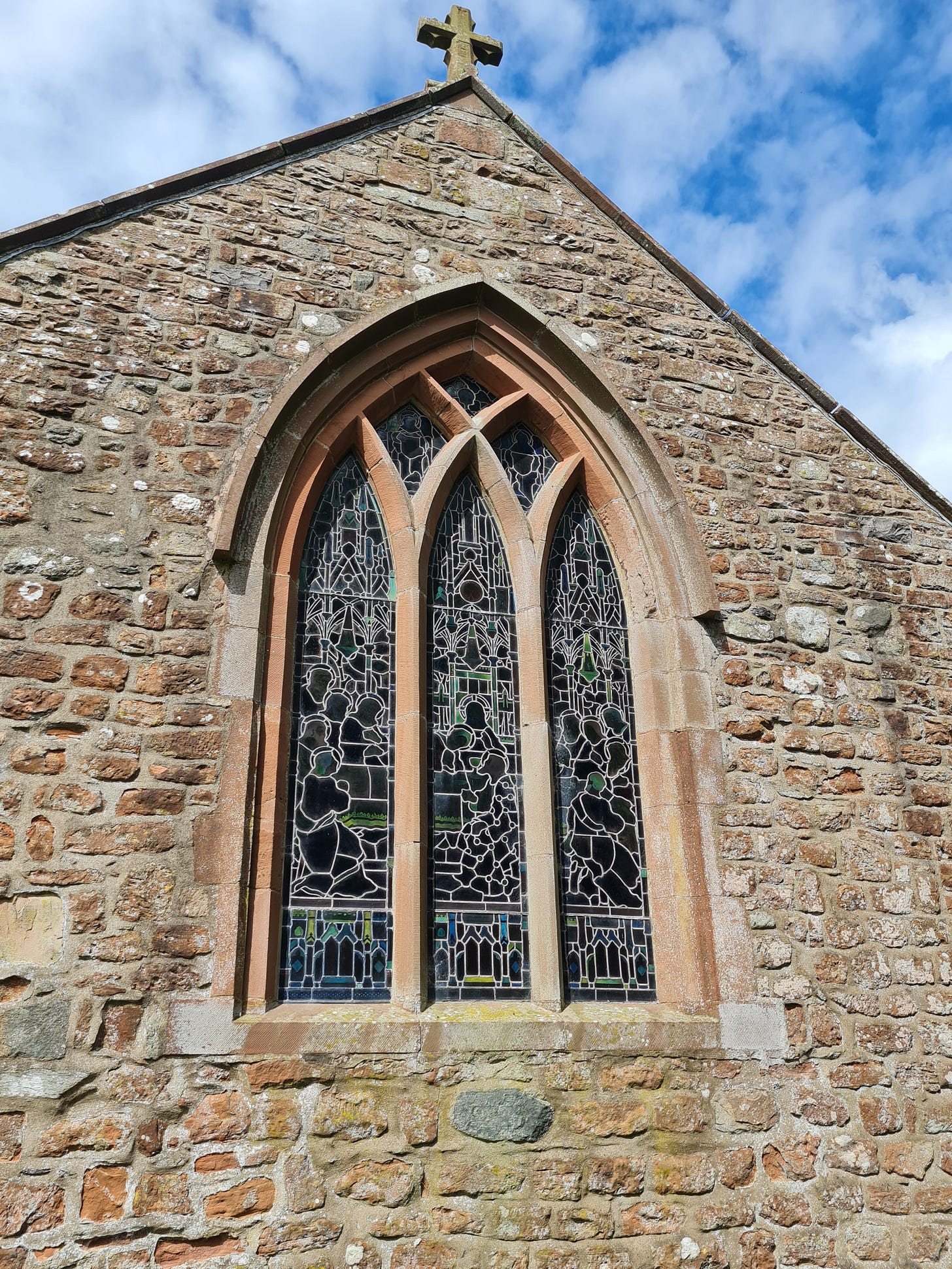The second period of Gothic church architecture is called “Decorated”, for reasons which will become obvious. It’s actually further divided into two sub-periods: around 1260-1320, which is called geometric, and around 1300-1350, which is called curvilinear.
Decorated Gothic does exactly what it says – decorates everything. The clean, simple lines of Early English and its lancet windows disappear, to be replaced by meandering foliage, tiny beasts, gargoyles and increasingly complicated windows and ceilings.
Let’s start with windows. This is a picture of the windows in the Chapter House at York Minster. The grouping of lancet windows under one arch developed into what is now called “bar tracery”; lead glazing bars, together with stone surrounds, made complex patterns. In this example you can see pairs of lancets grouped under one arch made of stone, with a single lancet in the middle and all of this complexity creates space for more shapes between and above them. You can see why this is called “geometrical” tracery; patterns based on the circle predominate above the arched lancets. These windows belong to the late 13th century.
One of the largest geometric windows at ground level that I have seen is this one at Bedale In Yorkshire. Now composed of plain glass, at one time it must have been highly coloured. It demonstrates the potential of subdividing the circles into smaller and smaller shapes using the lead glazing bars. This window is around 1290 so similar in date to York Minster.
Here’s another one, from the refectory at Easby Abbey. The circles started very large, with fairly simple stone shapes, but as time progressed, stonemasons became more creative in their dividing of the upper parts of windows. Here is a curvilinear window from the west end of York Minster; above the pairs of lancets, the mason and glass makers have got carried away with a more curved and less rigidly geometrical style.
Smaller churches didn’t have the budgets for this level of work, and the most common early curvilinear style is the Y-shaped window from around 1300. Here’s an example of this from a church at Millom in Cumbria. The stone bars have been renewed recently (the stone here is of sandstone which weathers badly) and the church is interesting for having windows from pretty much every period.
Keep reading with a 7-day free trial
Subscribe to Incola ego sum in terra to keep reading this post and get 7 days of free access to the full post archives.




